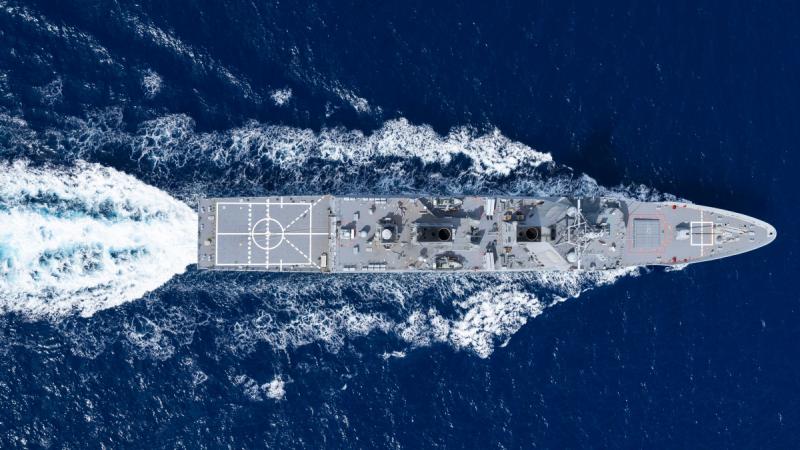10 November 2025
Australia’s Chief of Navy Vice Admiral Mark Hammond welcomed guests and delegates from more than 50 nations for three days of high-level engagement when he officially opened the Indo-Pacific Sea Power Conference on November 4.
Held at the International Convention Centre in Sydney, the theme of the conference was ‘Strength at sea equals security and prosperity at home’.
Vice Admiral Hammond began his address by acknowledging the 1438 officers and sailors in 21 Australian warships currently at sea, which he said represented about half of the fleet in terms of the number of platforms.
He said navies across the world had underwritten the wealth and prosperity of nations since the earliest days of sail.
“This is just as true for Australia now in the 21st Century as it was for the ancient Egyptians in the 12th Century BCE,” he said.
“Every year, maritime trade contributes around $650 billion to our national economy … which accounts for around 29.5 per cent of our GDP.”
However, Vice Admiral Hammond warned the rules and conventions giving Australians access to the sea are being openly challenged, and in some cases, disregarded entirely.
“Territorial disputes across the South China Sea serve as potential flashpoints for conflict in the region,” he said.
“Incidents of aggression at sea between the maritime forces of nation-states have been occurring with more frequency.
“Submarine cables are being actively damaged. The slightest miscalculation could turn competition into conflict with no warning at all.”
'The transformation is underpinned by the largest investment in naval capability in our nation’s history, allocated under the 2024 National Defence Strategy and its Integrated Investment Program.'
Vice Admiral Hammond went on to say this lack of transparency increased strategic tension and anxiety in the region, as well as the risk of escalation.
“The reality we face is that you do not need to invade Australia to defeat Australia,” he said.
“While maritime trade routes and seabed cables are our lifelines, they are also our greatest vulnerabilities.”
Vice Admiral Hammond highlighted Navy was undergoing a period of great transformation, conducting an unprecedented uplift to the size and lethality of its fleet.
“The transformation is underpinned by the largest investment in naval capability in our nation’s history, allocated under the 2024 National Defence Strategy and its Integrated Investment Program,” he said.
The investment will deliver 11 new upgraded Mogami-class general-purpose frigates, six Australian-built Hunter-class frigates, six Arafura-class offshore patrol vessels, 12 more Seahawk Romeo helicopters and, working with Australia’s AUKUS partners, a sovereign nuclear-powered submarine capability.
In a fireside chat with military historian Professor Peter Dean after his speech, Vice Admiral Hammond said the standout achievement since the last Indo-Pacific Conference two years ago was the demonstration of professionalism and resilience of Navy’s people.
Under high stress and a high-tempo environment, the commitment of Navy people has seen the voluntary separation rate from Navy drop to a four-year low of 4 per cent. Overall, the separation rate is about 6.5 per cent when medical separations and retirements for age are included.
A challenge of the past two years has been endeavouring to sustain a work-life balance for Navy people.
“There’s an acceleration context to everything that we’re doing, to optimising the availability of the fleet, the lethality of the fleet … to accelerating delivery of the future fleet,” Vice Admiral Hammond said.
The big challenge, he said, was how to square the circle against the demands of the mission, the expectations of the government and the Australian people, and make sure that what is being done is sustainable.
Vice Admiral Hammond reiterated that his first obligation was to the safety and wellbeing of Navy’s people.


